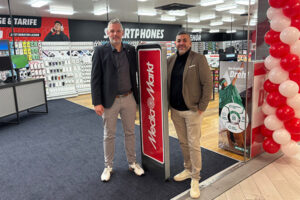By Quentin Richelle
In the retail industry, monitoring competitor offerings is crucial, yet complex to do in an efficient and scalable way. On average, retailers need to monitor about 30,000 products from dozens of competitors in each country in which they operate. Consumer trends are evolving faster than ever and monitoring the market’s activity regularly has become necessary to stay on top of one’s game. Today, competitor monitoring is mostly done manually, which is time-consuming and highly inefficient as the samples of the data analyzed are neither exhaustive nor up-to-date. Fortunately, new innovative solutions, leveraging the power of artificial intelligence, exist to realize the full potential of real-time competitive analysis.
Online stores display all data on offerings needed for competitive intelligence. Retailers have access to more data than ever before, but they overlook most of the essential insights simply due to the fact that human intelligence is limited in its ability to process this massive amount of information efficiently.
Data is available everywhere, and the real value lies in solutions capable of processing mass data and drawing information from it. Innovative solutions are capable of collecting enormous amounts of data from online stores and processing it in the blink of an eye. Based on product descriptions, artificial intelligence can automatically recognize a huge variety of products, classify them into the right categories, and compare them with similar products offered by competitors. It collects all information related to each product, such as price, discount, colors, materials, and sizes available.
The old way of competitive shopping in physical stores or manually browsing through each e-commerce offer has too many drawbacks. These techniques are time-consuming, limited in scope, and the data is quickly outdated. Today, retailers use new generation tools to access competitor data along with their own for easy benchmarking. All information is updated daily and stored in a database to track precise evolutions of each indicator. Everything is in one place, right on their desktops. Data collection is placed on autopilot to intelligently monitor competitor activity much more often and quickly detect changes in the market. For example, retailers are able to see the precise assortment structures of their competitors and benchmark them against their own. If the offering of a specific product is too high compared to one’s competitors and it’s reflected in sales, retailers can adjust their assortments to maximize sales. When a price point is poorly aligned with competition on a specific product, they can make immediate adjustments. Being able to see these discrepancies early allows for quicker adjustments, which saves months of revenues. For multinational companies, frequent monitoring of local competitors in each country is crucial. An innovative solution such as Retviews, enables retailers to easily track the entire market and ensure the best positioning at all times. Besides being faster, some data was simply not available before. Since these solutions keep track of any price modification on a daily basis, retailers are able to see when the price of a product has been lowered but not displayed to consumers as such, the so-called “hidden discounts”. It is also possible to see out-of-stock items in competitor offerings and detect products that are selling fast.
Flying blindly is simply not an option for retailers in today’s highly competitive environment. Modern retailing needs an analytical tool capable of delivering insights on a large number of brands, products, and countries. Technology allows retailers to act faster and make data-driven decisions to stay competitive.





